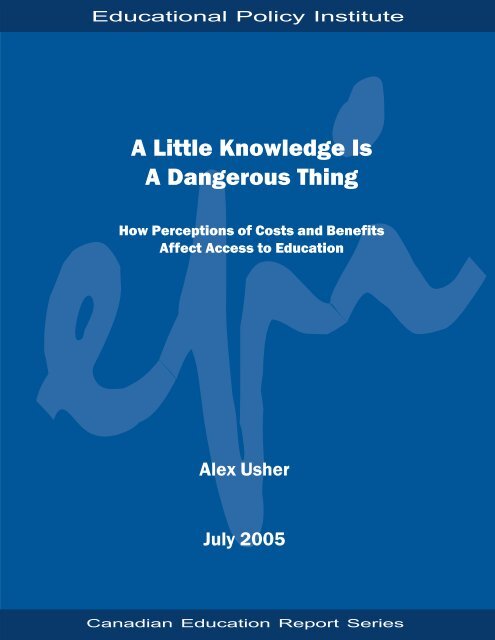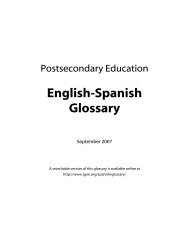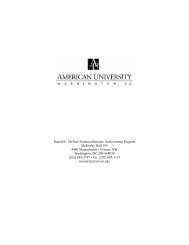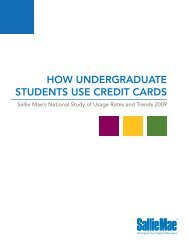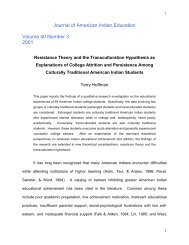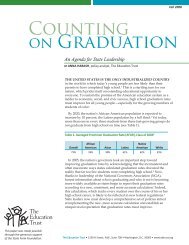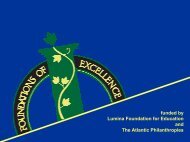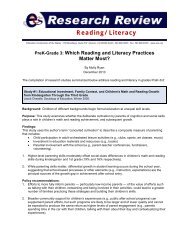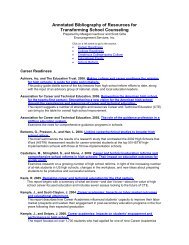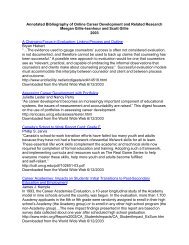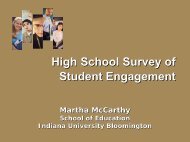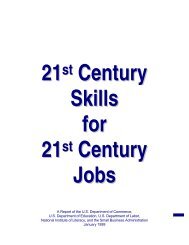A Little Knowledge is a Dangerous Thing: How Perceptions of Costs ...
A Little Knowledge is a Dangerous Thing: How Perceptions of Costs ...
A Little Knowledge is a Dangerous Thing: How Perceptions of Costs ...
- No tags were found...
You also want an ePaper? Increase the reach of your titles
YUMPU automatically turns print PDFs into web optimized ePapers that Google loves.
Erholung am Gartenteichdas ganze JahrWasser war bereits zu Urzeiten mag<strong>is</strong>cherAnziehungspunkt und zugleich Lebenselixierfür Mensch und Tier. An der Faszinationfür dieses Element hat sich b<strong>is</strong> heutenichts geändert. Dem wertvollen kühlenNass kann keiner widerstehen, besondersnicht im eigenen Garten.Was gibt es also Schöneres, als am eigenenGartenteich zu sitzen und das Lebenim Teich zu beobachten, dem Plätscherndes Wassers zu lauschen, den fr<strong>is</strong>chenGeruch einzuatmen und die Farbenprachtder blühenden Pflanzen zu genießen? Das<strong>is</strong>t Naherholung zu Hause!Mit diesem Ratgeber informiert Sie seraausführlich über Gestaltung, Bau und Pflegeeines naturgerechten Gartenteiches.Dabei helfen Ihnen sera Markenprodukte,damit Ihre F<strong>is</strong>che gesund und munter,und das Teichwasser stets kr<strong>is</strong>tallklar undbiolog<strong>is</strong>ch sauber bleiben.Viel Spaß und eine entspannte Zeit amGartenteich mit sera!3
AcknowledgementsA number <strong>of</strong> people have contributed their time and effort to th<strong>is</strong> paper,which has been over two procrastination-filled years in the making: AmyCervenan has performed her usual peerless editing magic; Massimo Savinohas done a sterling job in rendering the graphics for figures 2 through 4.The patience and good humour shown by Sean Junor when th<strong>is</strong> work wasin its infancy was greatly appreciated, as were the comments <strong>of</strong> a number<strong>of</strong> participants at the May 2003 Canadian Economics Association meetingin Ottawa and <strong>of</strong> participants at the June 2003 Invitational Conference onUniversity Reform and Access to Higher Education: Special Focus on Easternand Central Europe in Prague. Alexy Kluyev’s patience in waiting forthe final version <strong>of</strong> th<strong>is</strong> paper <strong>is</strong> especially appreciated.Most importantly, however, a word <strong>of</strong> thanks <strong>is</strong> due to my valued colleagueNatasha Sawh, whose thoughts and comments were essential to the genes<strong>is</strong>development <strong>of</strong> th<strong>is</strong> report. Th<strong>is</strong> report would not have been written withouther.Despite the large cast <strong>of</strong> characters who ass<strong>is</strong>ted in the gestation <strong>of</strong> th<strong>is</strong>report, however, any m<strong>is</strong>takes, errors or om<strong>is</strong>sions are entirely the responsibility<strong>of</strong> the author.Educational Policy Institute 4
IntroductionThe literature on access to post-secondary education shows that there aremany barriers to post-secondary education. One important barrier – andperhaps the one that receives the most attention <strong>is</strong> the cost <strong>of</strong> education.Debates on access to education in North America and Europe tend to revolvearound questions <strong>of</strong> tuition (or, in more soph<strong>is</strong>ticated d<strong>is</strong>cussions,around concepts <strong>of</strong> “net cost”). Drawing on work such as Heller (1999)and earlier examinations <strong>of</strong> student price response co-efficients (SPRCs) suchas Leslie and Brinkman (1988), the case has been made that even smallchanges in net cost can have measurable effects on participation, and thatthese changes in participation are d<strong>is</strong>proportionately concentrated amongpoorer students.Yet, while it <strong>is</strong> possible to make the case that marginal changes in tuitionhave marginal effects on participation in the United States, it <strong>is</strong> less easy tomake the case elsewhere. Simply put, the United States has spare capacityin its higher education system and other countries do not. In situationswhere capacity <strong>is</strong> constrained, it <strong>is</strong> unlikely that changes in cost will affectaggregate demand in the way suggested by SPRC models (though it maystill affect the social composition <strong>of</strong> demand). Moreover, the explanation <strong>of</strong>short-term changes in tuition causing short-term changes in demand <strong>is</strong> unconvincingin many cases, given both the long-term benefits <strong>of</strong> higher educationand the long-term investments in preparation for education made byyoung people in their families. Can years <strong>of</strong> high school study and hundreds<strong>of</strong> thousands <strong>of</strong> dollars really be thrown out the window because <strong>of</strong> a$100 change in net costs, as SPRC studies suggest?The argument presented in th<strong>is</strong> paper <strong>is</strong> that whatever merits SPRC analyseshave, they m<strong>is</strong>s a deeper truth. Individuals make rational dec<strong>is</strong>ions basedon the information available to them; however, rational dec<strong>is</strong>ions made withbad data can lead to irrational results. An increasing amount <strong>of</strong> evidencesuggests that “popular knowledge” <strong>of</strong> the costs and benefits <strong>of</strong> higher educationare drastically out <strong>of</strong> kilter with reality, making higher educationseem far less attractive than it actually <strong>is</strong>. Indeed, the extent to which perceptionsdiffer from reality would appear to be so large that they may forma separate form <strong>of</strong> barrier to education all on their own.Th<strong>is</strong> paper uses specifically Canadian data to make a point about the effects<strong>of</strong> “bad data” on educational dec<strong>is</strong>ion-making, because it <strong>is</strong> the only countrywhere reliable recent data ex<strong>is</strong>ts on perceptions both <strong>of</strong> the cost <strong>of</strong> educationand its benefits. <strong>How</strong>ever, given the similarity <strong>of</strong> Canadian andAmerican results on perceptions <strong>of</strong> costs, one suspects that th<strong>is</strong> may be amuch wider phenomenon, and one that all countries that charge tuitionfees need to monitor.Educational Policy Institute 5
The Canadian ContextIn Canadian d<strong>is</strong>cussions on access to education, the barrier to educationthat receives the most emphas<strong>is</strong> <strong>is</strong> the cost <strong>of</strong> education. Boothby andMcMullen (2001) show that 36 percent <strong>of</strong> Canadian high school graduateswho do not go on to post-secondary education within two years cite “financialreasons” as a barrier to post-secondary. Th<strong>is</strong> figure r<strong>is</strong>es to 71 percent ifthose who cite “no barriers at all” to attending post-secondary education(but who still choose not to attend) are excluded. It <strong>is</strong> not clear that YITSrespondents who cite “financial barriers” for non-attendance in post-secondaryare actually referring to the cost <strong>of</strong> tuition as the barrier; after all,close to <strong>of</strong> thirty per cent <strong>of</strong> high-school drop-outs also cite “financial barriers”as a reason for not completing secondary school. <strong>How</strong>ever, stakeholdersand policy-makers have in recent years tended to act as if “financial barriers”means tuition, which has led to widespread concern about the effect <strong>of</strong>tuition on access.The assumption that cost/tuition <strong>is</strong> the major barrier to post-secondary educationrests on two assumptions which deserve careful scrutiny. The firstrelates to our understanding <strong>of</strong> the term “financial barriers”. As Finnie(2004) has noted, at least conceptually, two types <strong>of</strong> cost-barriers ex<strong>is</strong>t: Onerelates to cash constraints (i.e. th<strong>is</strong> purchase <strong>is</strong> a good deal, but it <strong>is</strong> beyondmy means at the moment) and the other relates to cost-benefit analys<strong>is</strong> (i.e.th<strong>is</strong> costs too much relative to the benefit received). It <strong>is</strong> unclear which <strong>of</strong>these two cost-barriers <strong>is</strong> the more important barrier to education; despitethe recent explosion <strong>of</strong> research on access to education in Canada, littlenew light has been shed on th<strong>is</strong> <strong>is</strong>sue. For instance, Hemingway (2003), inh<strong>is</strong> examination <strong>of</strong> design deficiencies in student ass<strong>is</strong>tance program implicitlypoints to the former as a problem while CAUT (2003), by ignoring therole <strong>of</strong> student ass<strong>is</strong>tance in overcoming short-term cost-barrier implicitlyfavours the latter interpretation. If the Hemingway interpretation <strong>is</strong> correct,then any cost increases could be <strong>of</strong>fset by loans; if the CAUT interpretation<strong>is</strong> correct then loans would be ineffective, and only grants and/orlower tuition would reduce financial barriers. For cost/tuition to be themajor barrier, one must implicitly accept that the latter interpretation <strong>of</strong>“financial barriers” to be the correct one.At leastconceptually,two types <strong>of</strong>cost-barriersex<strong>is</strong>t:One relatesto cashconstraintsand the otherrelates tocost-benefitanalys<strong>is</strong>Is th<strong>is</strong> assumption true? As Junor and Usher (2004) noted, the data presentlyavailable to Canadian researchers <strong>is</strong> insufficient to permit us to determinewhich <strong>of</strong> the two cost barriers <strong>is</strong> the more important deterrent to accessto PSE. Let us assume for moment – as anti-tuition campaigners do –that the CAUT interpretation <strong>is</strong> correct. If so, then it must ipso facto also betrue that youth and their families have some means <strong>of</strong> quantifying the costsand benefits <strong>of</strong> post-secondary education and that they make cost-benefitcalculations in at least a quasi-rational manner. Th<strong>is</strong> leads us to the secondassumption required to sustain the cost-as-barrier thes<strong>is</strong>: that both the costsand the benefits <strong>of</strong> post-secondary education (PSE) are well-known andEducational Policy Institute 6
well-understood, so that families and individuals make dec<strong>is</strong>ions based onfact.While th<strong>is</strong> assumption may seem straightforward, it <strong>is</strong> in fact untested inCanada. As th<strong>is</strong> paper will demonstrate, Canadians - particularly thosefrom low-income families - actually have a very poor sense <strong>of</strong> the costs andbenefits <strong>of</strong> education. As a result, they may be making dec<strong>is</strong>ions not to pursuepost-secondary education based on calculations which are highly “irrational”when viewed from an objective point <strong>of</strong> view, but which seem “rational”to them given their own knowledge.The Cost BarrierThe extent to which tuition fees – or more generally, costs <strong>of</strong> attendance -affect access to PSE <strong>is</strong> somewhat unclear and may differ considerably dependingon the national or institutional context. The most extensive researchin th<strong>is</strong> area has been done in the United States. Leslie and Brinkman(1988) made estimates regarding the negative effects <strong>of</strong> tuition on enrolmentand estimated the effects <strong>of</strong> a $100 increase in tuition (net <strong>of</strong> changesin student ass<strong>is</strong>tance) as leading to diminutions <strong>of</strong> enrolments on the order<strong>of</strong> 0.7%. A decade later, using the same techniques Heller (1999) found theeffects to be just 0.33%, a decline he ascribed to either the increasing returnsto education or the increasing differentiation between tuition in public andprivate colleges. <strong>How</strong>ever, these analyses have tended to focus on the effects<strong>of</strong> dynamic changes in enrolment between institutions, given a competitivepricing environment. Thus, in these cases a $100 r<strong>is</strong>e in tuition reducesenrolment at a particular institution by 0.7%, but these students may simplybe switching to cheaper institutions, not dropping out <strong>of</strong> education altogether.There <strong>is</strong> noobservablerelationshipbetweentuition andenrolment atan individuallevel oncesecondaryschoolgrades areheldconstantKane (1999) and Junor and Usher (2002) take a more system-wide look atthe effects <strong>of</strong> tuition increases. Kane, looking at a small sample <strong>of</strong> NewEngland states, notes that large changes in net cost in a single state seems tochange that state’s relative levels <strong>of</strong> university enrolment v<strong>is</strong>-à-v<strong>is</strong> neighbouringstates. Junor and Usher, looking at twenty years <strong>of</strong> data from Canadianprovinces note simply that there <strong>is</strong> no obvious connection between the level<strong>of</strong> tuition and provincial enrolment. Raymond and Rivard (2003) go furtherand suggest that in Canada there <strong>is</strong> no observable relationship betweentuition and enrolment at an individual level once secondary school gradesare held constant.While the econometrics <strong>of</strong> specific policy changes may be debated, it <strong>is</strong> notseriously open to debate that an increase in tuition – holding educationalbenefits constant – leads to a diminution in the desirability <strong>of</strong> postsecondaryeducation as an investment <strong>of</strong> time and money. For th<strong>is</strong> to have an effect onaccess to PSE, however, it must be the case that some individuals actuallyEducational Policy Institute 7
make the necessary calculations and decide against making the investmentin PSE. But how, prec<strong>is</strong>ely, does th<strong>is</strong> happen?Personal Investments in Post-Secondary Education:The FrameramewororkAnders-Bellamy (1993) has observed that Canadian youth do not rationallycalculate cost-benefit ratios when making dec<strong>is</strong>ions regarding post-secondaryeducation. While th<strong>is</strong> <strong>is</strong> true in a general sense – one does not as a rulesee seventeen year-olds making calculations <strong>of</strong> net present value before choosinga course <strong>of</strong> post-secondary study – it <strong>is</strong> possible to take th<strong>is</strong> observationtoo far. As the University <strong>of</strong> Chicago econom<strong>is</strong>t Richard Thaler once observed,people are “neither rational automatons nor blithering idiots”(Bernstein, 1996); in other words, they do calculate costs and benefits in avery rough and ready kind <strong>of</strong> way, using the knowledge available to them.Individualsconductcost-benefitanalysesbased onperceivedcosts andbenefits <strong>of</strong>PSEEvans (2002) cites Goldthorp (1998) for making a case that the dec<strong>is</strong>ion topursue PSE <strong>is</strong> likely made, as rational action econom<strong>is</strong>ts would suggest, byindividuals making calculations regarding the costs and benefits <strong>of</strong> the dec<strong>is</strong>ion.Similarly, in the Canadian context, COGEM (2002) noted in its study<strong>of</strong> Canadians in their mid-20s who had not participated in PSE “many participants[in the COGEM study] had concluded that PSE was not worthwhileto them because the cost was too high relative to the expected benefitsand the advantages they could reasonably expect to obtain from it”. Th<strong>is</strong>suggests that some form <strong>of</strong> financial cost-benefit reckoning – however crude- <strong>is</strong> part <strong>of</strong> the dec<strong>is</strong>ion to go or not to go. <strong>How</strong>ever, Evans also suggests thatth<strong>is</strong> rationality only operates “within people’s (ex<strong>is</strong>ting) horizons and socialnorms”. In other words, what matters in dec<strong>is</strong>ion making <strong>is</strong> not what <strong>is</strong>actually true, but what one believes to be true.It follows from th<strong>is</strong> that individuals do not conduct cost-benefit analysesbased on actual costs and benefits <strong>of</strong> post-secondary education, but ratherbased on its perceived costs and benefits. Th<strong>is</strong> represents a sort <strong>of</strong> “bounded”cost-benefit analys<strong>is</strong>. Cost-benefit analys<strong>is</strong> using only actual costs may befine in an abstract sense, but will not yield insights into the actual dec<strong>is</strong>ionmakingprocess particularly given the evidence that considerable gaps ex<strong>is</strong>tbetween perceptions and reality in th<strong>is</strong> area. Ikenberry and Hartle (2001)noted in the American context that most people overestimate the cost <strong>of</strong>tuition. Th<strong>is</strong> conclusion was recently re-confirmed by Horn, Chen andChapman (2003), who found that 11th grade students and their parents byroughly 70%. If it <strong>is</strong> perception <strong>of</strong> cost which affects dec<strong>is</strong>ion making, th<strong>is</strong>overestimation represents a kind <strong>of</strong> hidden barrier to post-secondary education,particularly if m<strong>is</strong>-estimation <strong>is</strong> shown to have a correlation withother social or economic factors.Educational Policy Institute 8
The Unit <strong>of</strong> Analys<strong>is</strong>Most consumer goods can be bought on impulse and consumed at le<strong>is</strong>ure;by th<strong>is</strong> definition higher education <strong>is</strong> most certainly not a typical consumergood. Many young people are oriented towards higher and further educationfrom a very young age. Junor and Usher (2002) note that nearly twothirds<strong>of</strong> Ontario university applicants report making the dec<strong>is</strong>ion to attenduniversity before their fifteenth birthday. Th<strong>is</strong> implies that prior to actuallyattending university, students are investing several years <strong>of</strong> time and energyto prepare for and obtain the grades required to attend university. Similarly,parents begin financial planning for their children’s education longbefore their children are eligible to attend university. Acumen Research(2002) notes that close to 60 percent <strong>of</strong> all university applicants began havingfinancial planning d<strong>is</strong>cussions with their parents in grade 11 or earlier,which, given Ontario’s then-unique secondary structure implies that for moststudents’ planning d<strong>is</strong>cussion begin two years prior to post-secondary education.Nearly 2/3<strong>of</strong> Ontariouniversityapplicantsdecide toattenduniversitybefore their15thbirthdayThe dec<strong>is</strong>ion to attend university, therefore, <strong>is</strong> usually one taken long inadvance <strong>of</strong> the purchase <strong>of</strong> university services, and which involves manyfamily members, not just the student. Higher education requires long-termcommitment, <strong>is</strong> not an “impulse buy” and moreover, has few if any closesubstitutes in the economic sense <strong>of</strong> that term. While community collegesare sometimes mooted as a potential substitute, the evidence does not bearth<strong>is</strong> out. As Junor and Usher (2004) note, only one in ten applicants toOntario universities say they even considered – let alone applied – to a communitycollege.Since higher education <strong>is</strong> not a typical consumer good, it <strong>is</strong> unlikely thatmuch <strong>of</strong> the economics <strong>of</strong> consumer goods applies to the purchase <strong>of</strong> highereducation. With consumer goods, price elasticity matters; a small increasein the price <strong>of</strong> a good can persuade people to switch to a substitute good.Higher education, given the long preparation period and lack <strong>of</strong> close substitutes<strong>is</strong> consequently unlikely to be susceptible to short-term changes intuition. Th<strong>is</strong> same logic suggests that changes in tuition are more likely toaffect young people indirectly, by altering parents’ views about the desirabilityand affordability <strong>of</strong> post-secondary education in the long-term and thustheir likelihood <strong>of</strong> ra<strong>is</strong>ing or lowering their children’s expectations aboutpost-secondary education. If so, th<strong>is</strong> would be cons<strong>is</strong>tent with French sociologicaltheories about education in the Bourdieu tradition (Wilms, 2003).<strong>How</strong>ever, for our purposes the key insight <strong>is</strong> that unlike most economic dec<strong>is</strong>ions,the identity <strong>of</strong> the “purchaser” <strong>is</strong> unclear. There <strong>is</strong> not, as orthodoxeconomic theory would suggest, a single purchaser with a single set <strong>of</strong> preferencesand utility curves. Instead, we have a situation where the utilityfunctions <strong>of</strong> at least two people (one parent, one child) and possibly more(other parents, extended family, etc) must be examined. In order to exam-Educational Policy Institute 9
Very few Canadians were even close to guessing the right response – onlyabout one in six (16 percent) estimate that the average university graduatehas an annual income <strong>of</strong> $50,000 or more. Just over one-quarter (26 percent)<strong>of</strong> respondents thought that university graduates actually made lessthan high school graduates on average.While there was not substantial variation by region, respondents in Quebecgave the highest median estimate for university graduates’ average earnings($9,002 more than high school graduates), followed by Albertans($6,730). Respondents in Saskatchewan and Manitoba gave the lowest medianestimate ($4,272). Males gave a slightly more accurate median estimate($6,886) than do females ($5,265). Differences in median estimates by agewere negligible.Low-incomefamiliestend toascribelowerpremiums toa universityeducationCanadians from low-income families tend to ascribe lower premiums to auniversity education than other Canadians do. Those with family incomesunder $30,000 estimated the average university graduate’s income at $4,885more than the average high school graduate, compared to a median estimate<strong>of</strong> $6,962 more by Canadians with family incomes <strong>of</strong> $60,000 or more.There <strong>is</strong> no obvious relationship between educational attainment and estimates<strong>of</strong> financial benefits <strong>of</strong> post-secondary education.Rational Cost-Benefit Analys<strong>is</strong> <strong>of</strong> Post-SecondaryEducation in CanadaLooking at the difference between Census-reported average earnings <strong>of</strong>university and high school graduates ($27,191 per year) versus the averagecost <strong>of</strong> tuition ($3,749 per year), it <strong>is</strong> clear that in purely financial terms, thecost <strong>of</strong> a university education <strong>is</strong> indeed a good long-term investment. Herewe test the net benefits <strong>of</strong> a university degree compared to a high schooldiploma by considering the future value <strong>of</strong> going to university.Table 3. Simplified <strong>Costs</strong> and Benefits <strong>of</strong> a University DegreeIn order to calculate the future value <strong>of</strong> both the costs and the benefits, wehave used an annual interest rate <strong>of</strong> 5%. Since both costs and benefits aresubject to the same rate, the actual rate <strong>is</strong> not important. <strong>Costs</strong> include tui-Educational Policy Institute 13
tion costs and foregone income, but they do not include living expenses, asthese would be paid regardless <strong>of</strong> whether the individual went to universityor not. Assume an average tuition cost <strong>of</strong> $5,000 per year for four years, totake into account annual tuition r<strong>is</strong>es, making the price <strong>of</strong> a four-year degree$20,000. Assume foregone earnings <strong>of</strong> $15,000 per year <strong>of</strong> study, which<strong>is</strong> roughly equal to eight months <strong>of</strong> revenue from a full-time job at minimumwage. Finally, for the purposes <strong>of</strong> the calculation, assume that the currentincome differential between university graduates and high school graduatesremains constant at $27,191.Assuming individuals work for 35 years (regardless <strong>of</strong> whether they spendan additional 4 years in university), the future value <strong>of</strong> the cost <strong>of</strong> university<strong>is</strong> $441,281, calculated as follows:FV=PV(1 + i) NperFV=$80,000(1.05) 35FV=$441,281In other words, if, instead <strong>of</strong> attending university, the individual were tosave that $80,000 at an annual interest rate <strong>of</strong> 5%, it would yield $441,281in 35 years.The benefits are calculated according to a schedule <strong>of</strong> payments – in effect,the individual receives a bonus <strong>of</strong> $27,191 each year she (he) works for havingcompleted a university education. Thus the future value <strong>of</strong> the benefits<strong>is</strong> $2,455,899, calculated as follows:FV=(PMT/i)*[(1+i) Nper -1]FV=(27,191/0.05)*[1.05 35 -1]FV=$2,455,899These returns can be demonstrated graphically using Stager’s (1989) diagram<strong>of</strong> cost-benefit analys<strong>is</strong> (which <strong>is</strong> used in Figures 2, 3, and, 4 below).According to human capital theory, people decide to invest in human capitalwhen the benefits <strong>of</strong> doing so (i.e. the financial returns) outweigh thecosts (in th<strong>is</strong> case, tuition plus foregone income). With respect to pursuingpost-secondary studies, th<strong>is</strong> human capital equation <strong>is</strong> usually shown in adiagram such as the one used in the figures below, with the assumptionthat an individual will choose to go to post-secondary education if the benefits(area A) are greater than the costs (areas B plus area C). Clearly, in anobjective analys<strong>is</strong>, area A <strong>is</strong> much larger than areas B and C, and hencegoing to university would appear to be an investment with a high rate <strong>of</strong>return.Educational Policy Institute 14
Figure 2 - “Objective” Cost-Benefit Analys<strong>is</strong> <strong>of</strong> University AttendanceIncorporating Information Limitations: EstimatingCanadians’ Bounded Cost-Benefit Analys<strong>is</strong><strong>How</strong>ever, as we have seen, Canadians’ perceptions <strong>of</strong> the costs and benefits<strong>of</strong> education are a long way from objective. If we insert the values for costsand benefits that Canadians believe to be true into our cost-benefit equations,it becomes much more difficult to tell whether the cost <strong>of</strong> a universityeducation <strong>is</strong> a good investment. With roughly the same estimates <strong>of</strong> costs($80,000) but benefits <strong>of</strong> an additional $5,326 per year for university graduates,the future value <strong>of</strong> the costs <strong>is</strong>, as before, $441,281. The future value <strong>of</strong>the benefits, on the other hand, <strong>is</strong> much less, at $481,046. As Figure 3 illustrates,the area <strong>of</strong> A <strong>is</strong> now not much larger than the sum <strong>of</strong> areas B plus C.Th<strong>is</strong> demonstrates that, on average, Canadians do not appear to believethat university has very high returns at all.Educational Policy Institute 15
Figure 3 – “Subjective” Cost-Benefit Analys<strong>is</strong> <strong>of</strong> University Attendance,Canadian AverageLow-incomeCanadians,on average,perceive thatreturns touniversityare actuallynegativeFocussing now even more specifically on low-income Canadians (i.e. thosefrom families with under $30,000 in annual revenue), we find an even moreunsettling result. Using the average reported estimates <strong>of</strong> costs and annualbenefits reported by low-income Canadians (cost = $9,595, benefit = $5,029),the future value <strong>of</strong> the costs <strong>is</strong> $542,666 and the future value <strong>of</strong> the benefitsonly $454,221. In other words, low-income Canadians, on average, perceivethat returns to university are actually negative (see Figure 4). Therefore,given what we know Canadians believe about the costs and benefits <strong>of</strong>post-secondary education, it would appear that a dec<strong>is</strong>ion not to attendpost-secondary education <strong>is</strong> completely rational from a cost-benefit point <strong>of</strong>view.Educational Policy Institute 16
Figure 4 - “Subjective” Cost-Benefit Analys<strong>is</strong> <strong>of</strong> University Attendance, Canadian Average,Low-Income Only.These results show that substantial differences ex<strong>is</strong>t in Canadians’ perceptions<strong>of</strong> the returns to university education and that these differences areprimarily income-related. The attractiveness <strong>of</strong> university education as aninvestment <strong>is</strong> therefore effectively income-related. Since a difference in attractivenesslikely constitutes a difference in desire to attend, a differentialalong th<strong>is</strong> ax<strong>is</strong> can be characterized as a “barrier” to post-secondary education.The barrier <strong>is</strong> not actually financial in nature – while it concerns financialinformation, no money changes hands. Poor information, therefore,can best be characterized as an income-based, non-financial barrier.Are these results generalizable? Admittedly, their applicability may be limitedbecause the Ipsos-Reid survey from which they are drawn surveyed arandom sample <strong>of</strong> all Canadians rather than the more relevant sample <strong>of</strong>families with children fin<strong>is</strong>hing secondary school. <strong>How</strong>ever, as noted earlier,much <strong>of</strong> the information prospective students receive about post-secondaryeducation comes from family and friends. Hence, if low-income familiesin general are poorly informed about post-secondary education, then it<strong>is</strong> likely that their children are less able to access accurate information thantheir wealthier peers.Educational Policy Institute 17
The D<strong>is</strong>connect Between Stated Beliefs andCost-Benefit AnalysesThe results above show clearly that given limited and incorrect information,many Canadians – and those from low-income backgrounds in particular– are making rational cost-benefit analyses which imply that theydo not view university education as being “a good investment”. And yet,when asked directly about education as an investment, a different perspectiveemerges.9 out <strong>of</strong> 10Canadiansagree that auniversityeducation <strong>is</strong>a worthwhileinvestmentThe Ipsos-Reid Survey also asked respondents “In your opinion <strong>is</strong> the costto a student <strong>of</strong> a university education a good long-term investment or not?”Despite overestimating tuition cost and vastly underestimating the financialbenefit <strong>of</strong> a university degree, just over 9 out <strong>of</strong> 10 Canadians agreewith the statement that a university education <strong>is</strong> a worthwhile investment.There <strong>is</strong> very little variation by gender, age, income, or educationalattainment. Quebeckers (94%) are slightly more likely to think that thecost <strong>of</strong> a university education <strong>is</strong> a good long-term investment than otherCanadians do (88%). Perhaps unsurpr<strong>is</strong>ingly, university graduates (94%)are also more slightly likely to think that university education <strong>is</strong> a goodlong-term investment than are high school graduates (86%).Clearly, the data indicate some d<strong>is</strong>sonance in that a substantial number<strong>of</strong> Canadians believe both that the financial return on university degrees<strong>is</strong> negative and that university <strong>is</strong> a good individual investment. <strong>How</strong> canth<strong>is</strong> d<strong>is</strong>crepancy be explained? One possible answer <strong>is</strong> that Canadiansare simply poor judges <strong>of</strong> what constitutes a “good investment”. Another- perhaps more convincing - argument <strong>is</strong> that parents may not fully graspthe economic benefits <strong>of</strong> higher education but they nevertheless completelyunderstand the social status benefits <strong>of</strong> a university education (e.g. workingat a desk instead <strong>of</strong> factory). As Wolf (2002) has noted, not knowingthe specifics about educational choices does not prevent parents frommaking choices that are generally rational.Educational Policy Institute 18
So, there <strong>is</strong> definite evidence both that a) Canadians m<strong>is</strong>-estimate the costsand benefits <strong>of</strong> education and that b) the extent <strong>of</strong> th<strong>is</strong> m<strong>is</strong>-estimation <strong>is</strong>inversely related to income. Th<strong>is</strong> <strong>is</strong> an important result because - in theoryat least - th<strong>is</strong> problem should represent a major deterrent to the pursuit <strong>of</strong>higher education by low-income individuals. Care should be taken in puttingtoo much weight on theory, however. While the results <strong>of</strong> th<strong>is</strong> investigationclearly show the potential deterrent effect <strong>of</strong> poor information on access, itdoes not represent actual empirical pro<strong>of</strong> <strong>of</strong> such an effect. Such findingsawait a more definitive study.Policy Implications and Future ResearchThe main policy implications <strong>of</strong> these results are tw<strong>of</strong>old:Where cost<strong>is</strong> an access<strong>is</strong>sue,overestimations<strong>of</strong> costexacerbatethe problem,particularlyamong low-incomefamilies1. The prec<strong>is</strong>e effects <strong>of</strong> educational costs upon access to post-secondaryeducation are unknown. Given the results <strong>of</strong> th<strong>is</strong> paper, however, wecan be certain, that to the extent cost <strong>is</strong> an <strong>is</strong>sue, overestimations <strong>of</strong> costmust be exacerbating the problem, particularly among low-incomefamilies. Governments at all levels that are interested in reducingbarriers to education need to pay attention to th<strong>is</strong> <strong>is</strong>sue and ensure thatfamilies have better information about educational costs. The sameholds true for educational benefits.2. If it <strong>is</strong> true that Canadians tend to view the benefits <strong>of</strong> post-secondaryeducation in other than monetary terms, then th<strong>is</strong> may help to explaintheir res<strong>is</strong>tance to post-secondary education financing solutions thatrely on personal borrowing. While increased borrowing to make a“good investment” might seem a reasonable expectation, the attractiveness<strong>of</strong> th<strong>is</strong> proposition declines if the positive nature <strong>of</strong> the return <strong>is</strong>perceived to be non-monetary. In th<strong>is</strong> context, schemes that combinehigh tuition with high aid, however attractive they may seem in theory,are therefore unlikely to be perceived as fair by citizens until a betterunderstanding <strong>of</strong> costs and benefits <strong>is</strong> reached.Obviously, th<strong>is</strong> result has serious implications for policies relating to access,cost-sharing and student loans. Left unexplored in th<strong>is</strong> research <strong>is</strong> why individualshave such a poor understanding <strong>of</strong> the costs and benefits <strong>of</strong> educationand how their understanding can be improved. These would appear tobe urgent research tasks, given the magnitude <strong>of</strong> the policy problem hereindescribed.Educational Policy Institute 19
BibliographyAcumen Research Group (2002). University Applicant Survey Final ReportAndres-Bellamy (1993): Life Trajectories, Action and Negotiating theTransition from High-School in P. An<strong>is</strong>ef and P. Axelrod (eds.) Transitions:Schooling and Employment in Canada.An<strong>is</strong>ef , P and Sweet, R., (2002) Financial Planning for Post-SecondaryEducation: A Social-Demographic Pr<strong>of</strong>ile <strong>of</strong> Canadian Families. PacificDemographics: Vancouver. Unpubl<strong>is</strong>hed.Bernstein, Peter L. (1996) Against the Gods. John Wiley and Sons: NewYork.Boothby, G and McMullen, K (2002) At a Crossroads: First Results for the18 to 20-Year-Old Cohort <strong>of</strong> the Youth in Transition Survey. Stat<strong>is</strong>ticsCanada: Ottawa.Brunson, L, Butt, K and Deziel, Y (2002): Deciding about Post-SecondaryEducation: Hearing the Voices <strong>of</strong> Non-Attendees. Canada Millennium ScholarshipFoundation: Montreal.Canadian Association <strong>of</strong> University Teachers (2003). Tuition fee increasesdeterring qualified students. Available at: http://www.caut.ca/engl<strong>is</strong>h/publications/news_releases/20030812statscan.aspEvans, K (2002). “Challenging Inequality, Choosing Inclusion: HigherEducation in Social Landscapes” in A. Hayton and A Paczuska (eds.)Access, Participation and Higher Education: Policy and Practice. Kogan Page:London.Finnie, R (2004b) The Case for Student Loans: Why, When, <strong>How</strong>. Paper forCMEC-OECD-Canada Seminar, May 2004. Toronto: Council <strong>of</strong> Min<strong>is</strong>ters<strong>of</strong> Education. Available at http://www.cmec.ca/stats/quebec2004/Finnie.en.pdfGoldthorpe, J H, (1998) “Rational action theory for sociology”, Brit<strong>is</strong>hJournal <strong>of</strong> Sociology, vol 49, no. 2, pp. 267-92. 1998.Heller, D. (1999) “The effects <strong>of</strong> tuition and state financial aid on publiccollege enrolments”, Review <strong>of</strong> Higher Education. Vol 23, no 1, pp. 65-89.1999.Hemingway, F. (2003) Assessing Canada’s Student Aid Need AssessmentPolicies. Canada Millennium Scholarship Foundation: Montreal.Educational Policy Institute 20
Ikenberry, S and Hartle, T. (2001) Taking Stock: <strong>How</strong> Americans JudgeQuality, Affordability, and Leadership at U.S. Colleges and Universities.American Council on Education: Washington DC.Horn, L, Chen, X and Chapman C. (2003) Getting Ready to Pay for College:What Students and Their Parents Know About the Cost <strong>of</strong> College Tuition andWhat They Are Doing to Find Out. Washington: National Centre forEducation Stat<strong>is</strong>tics, US Department <strong>of</strong> Education.Ipsos-Reid (2004). Canadians’ Attitudes Towards Financing Post-SecondaryEducation: Who Should Pay and <strong>How</strong>? Montreal: Canada MillenniumScholarship Foundation. 2004Junor, S & Usher, A. (2002) The Price <strong>of</strong> <strong>Knowledge</strong>. Canada MillenniumScholarship Foundation: Montreal.Kane, T. (1999) The Price <strong>of</strong> Adm<strong>is</strong>sion: Rethinking <strong>How</strong> Americans Pay forCollege. Brookings Institution Press: Washington DC.Leslie, L and Brinkman, P. (1988) The Economic Value <strong>of</strong> Higher Education.Macmillan: New York.Raymond, M and Rivard, M. (2003). Have Tuition Fee Hikes in the late1990s Undermined Access to Post-Secondary Education in Canada? Presentationto the Canadian Education Research Forum, Ottawa, May 2003.Stager, D. (1989) Focus on Fees. Council <strong>of</strong> Ontario Universities: Toronto.Wilms, D (2003). Ready or Not. Canada Millennium Scholarship Foundation:Montreal. 2003.Educational Policy Institute 21
www.educationalpolicy.orgCopyright 2005


